A Guide to upload Images to S3
Introduction:
S3 (Simple Storage Service) is a cloud storage platform for handling file uploads, especially images. Whenever a mobile app or web application is developed, we need a reliable image storage solution. S3 provides scalable, secure and cost-effective storage with high performance.
In this blog, we can see the different approaches to upload images to s3.
Why S3 storage?
This storage has lot of advantages:
Scalability: Handles millions of images
Durability: Has 99.99% data durability
Global CDN Integration: Very easily intehrated for fast image delivery
Cost-Effective: Pay only for what we use
Security: Fine-grained access control and encryption options
Integration: Works without any issues with other AWS services
Prerequisites:
Before we start integrating, we must ensure we are having the following details.
- An AWS account with s3 access
- AWS Credentials (Access Key ID & secret Access key)
- An S3 bucket created
Direct Upload from client-Side
This can be easily done by using simple java script utility function.
Step 1: Install AWS SDK. The command is npm install aws-sdk.
Step 2:
Basic Client side Upload:
Import the installed package.
import AWS from ‘aws-sdk’;
We have to configure AWS.
AWS.config.update({
accessKeyId: ‘YOUR_ACCESS_KEY’,
secretAccessKey: ‘YOUR_SECRET_KEY’,
region: ‘REGION USED WHILE CREATION’
});
Step 3:
const s3 = new AWS.S3();
function uploadImage(file, bucketName, key) {
const params = {
Bucket: bucketName,
Key: key,
Body: file,
ContentType: file.type,
ACL: ‘public-read’ // Make the file publicly accessible
};
return s3.upload(params).promise();
}
const result = await uploadImage(file, ‘your-bucket-name’, images/${Date.now()}-${file.name});
If we call the function with the required parameters we can save the images in S3 bucket we have created.
Server-Side Upload:
Server-side uploads can be done by using Node.js or Express. It is a better security process.
Step 1:
Setting Up Express Server.
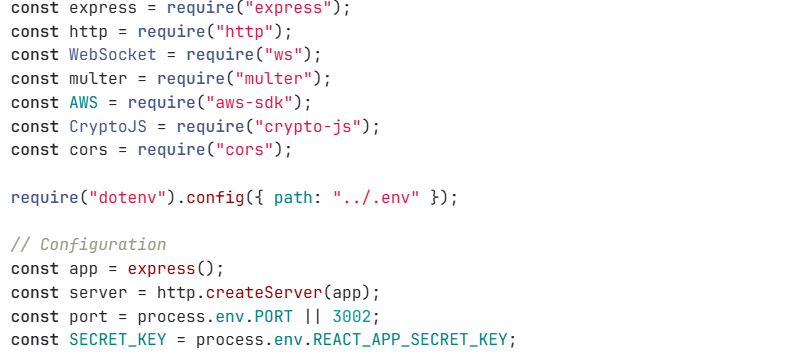
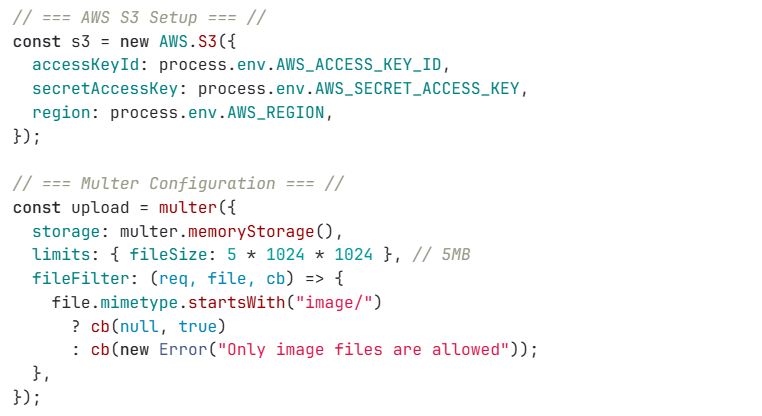
Step 2:
Upload images.
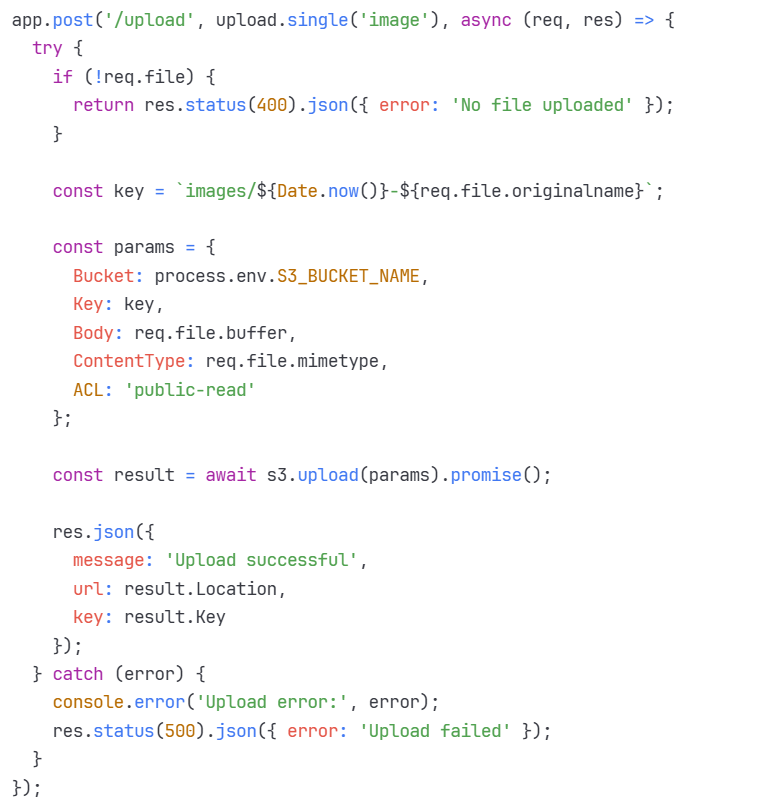
Predesigned URLs:
This is a more secure way to allow direct client uploads without exposing AWS credentials.
Here attached steps to create a URL on both client and server side respectively.
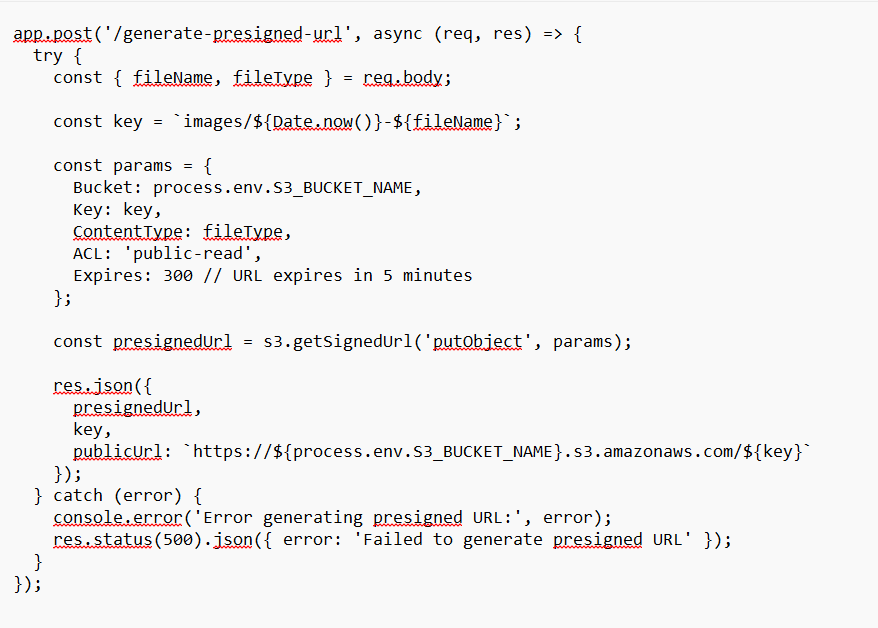
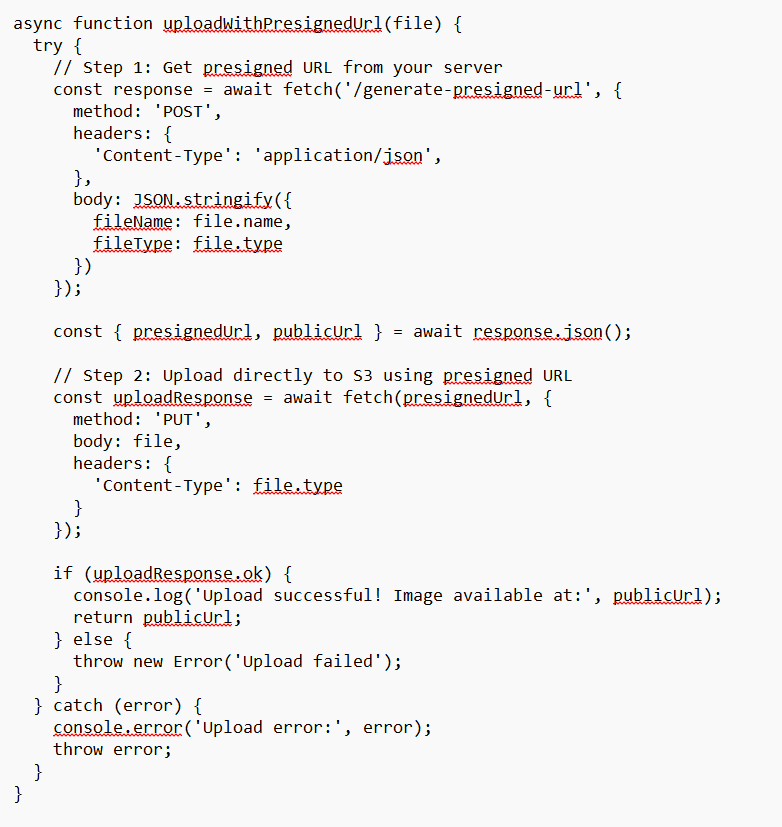
Advanced Features:
- We can also advanced features like Image optimization and resizing for better performance.
- We can also include progress tracking during file upload process.
- Multiple file uploads are handled.
- Improved error handling and validation
Best Practices:
- Considering security purposes we should always store keys as environemntal variables and should not use directly in our code either client-side or server-side.
- We should follow performance optimization methods.
- To track the progress we should include the error handling techniques.
Using these methods, we can upload images to cloud storage and can preserve them.
